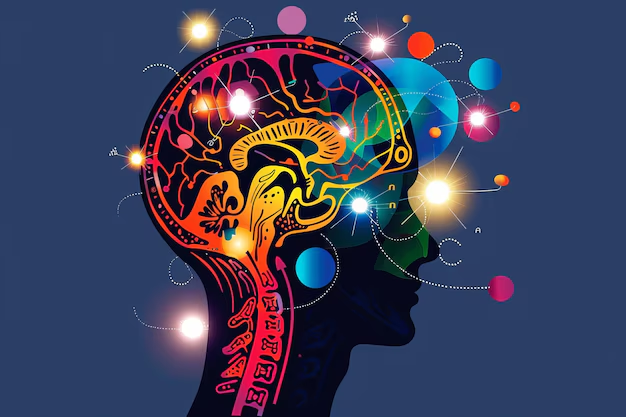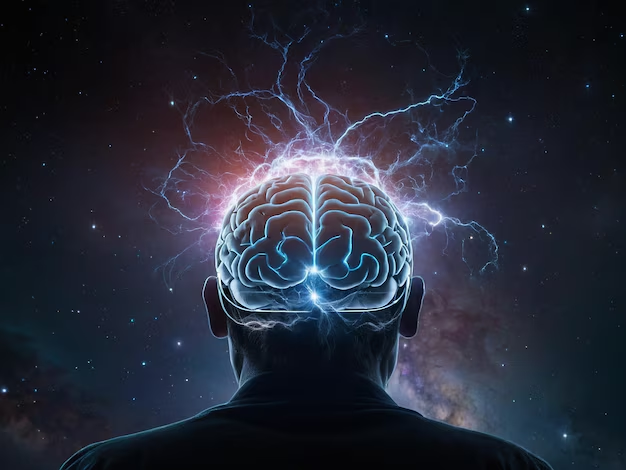What is Martiphilia? It is a term that may not be familiar to many, but understanding its definition, history, and psychological context is essential for recognizing its impact on individuals and society. This section will explore the meaning of martiphilia, its historical origins, and the reasons why studying this phenomenon is important.
1.1 Definition and Etymology
Martiphilia is derived from two parts: What is Martiphilia” which is related to the Greek god of war, Ares (Mars in Roman mythology), and “philia,” a Greek word meaning “love” or “fondness.” Thus, martiphili generally refers to an attraction or affinity towards war, combat, or martial things. This attraction could manifest in various ways, such as a fascination with military history, an interest in weapons, or even an erotic attraction to the idea of war or combat.
1.2 Historical Context and Origins
Historically, martiphili has roots that stretch back to ancient civilizations where war and combat were integral to society. Ancient Greeks, Romans, and other cultures often glorified warriors and military conquests, which could have contributed to the development of a psychological affinity towards war and combat. Over the centuries, this fascination evolved, sometimes becoming a part of the cultural identity in societies where military prowess was highly valued.
1.3 Importance of Understanding Martiphilia
Understanding martiphili is crucial for several reasons. It helps us comprehend how individuals relate to and are affected by concepts of power, control, and conflict. Additionally, exploring martiphili can shed light on broader societal attitudes towards violence, aggression, and defense, revealing underlying psychological and cultural currents that shape human behavior.
2. The Psychological Aspect of Martiphilia
The psychology of martiphili is complex and multifaceted, involving various theories and characteristics. In this section, we will delve into the psychological foundations that explain why some individuals may be drawn to martial themes and how these inclinations manifest.
2.1 Psychological Theories Behind Martiphilia
Several psychological theories attempt to explain martiphili. Some suggest it may be linked to the concept of sublimation, where aggressive impulses are channeled into socially acceptable outlets, such as an interest in military history or strategy games. Others propose that it might be related to a need for power or dominance, driven by underlying insecurities or childhood experiences.
2.2 Common Psychological Traits Associated with Martiphilia
People who experience martiphili may share certain psychological traits. These could include a fascination with power dynamics, a desire for control, and a strong sense of justice or protection. Some might also have a heightened sensitivity to issues of security and defense, often stemming from personal experiences or societal conditioning.
2.3 The Role of Childhood and Developmental Factors
Childhood and early developmental experiences can significantly influence the development of martiphili. Exposure to stories of heroism, war, and conflict at a young age, either through family history, media, or personal experiences, can shape one’s interests and inclinations towards martial subjects. Understanding these early influences can provide insight into why some individuals develop an affinity for war and combat.
3. Biological and Neurological Basis
Recent advances in neuroscience and biology have provided insights into the biological underpinnings of martiphili. This section explores the neurological and hormonal factors that may contribute to the development of an interest in martial themes.
3.1 Neurological Studies on Martiphili
Neurological research suggests that certain areas of the brain associated with aggression, reward, and arousal may be more active in individuals with martiphili. Studies using imaging techniques like fMRI have shown heightened activity in regions such as the amygdala and prefrontal cortex when individuals are exposed to martial imagery or themes, indicating a possible neural basis for their attraction.
3.2 Hormonal Influences and Biological Correlates
Hormones such as testosterone and adrenaline, which are linked to aggression and arousal, may also play a role in martiphilia. Individuals with higher levels of these hormones might be more predisposed to find martial activities appealing or stimulating. Understanding these biological correlates helps explain the physical sensations and emotional responses that accompany martiphilia.
4. Types and Variations of Martiphili
Martiphilia is not a monolithic phenomenon; it has various forms and subtypes. This section will classify and describe different manifestations of martiphilia, highlighting the diversity of interests and inclinations among those who experience it.
4.1 Different Forms of Martiphili
Martiphilia can take on many forms, ranging from a benign interest in military history to a more intense fascination with the act of combat itself. Some individuals may be drawn to the strategic and intellectual aspects of war, while others might be more interested in the physicality and violence associated with combat.
4.2 Sub-categories and Related Fetishes
There are several sub-categories of martiphilia, including reenactment enthusiasts, military memorabilia collectors, and those interested in martial arts or survivalist training. Additionally, martiphilia can sometimes overlap with other fetishes or interests, such as uniform fetishism or a fascination with authoritarian figures, highlighting its multifaceted nature.
5. Cultural Representations of Martiphili
Martiphilia has been depicted in various forms of cultural expression throughout history. This section explores how it has been represented in literature, art, and media, and how these portrayals influence societal attitudes towards war and combat.
5.1 Martiphilia in Literature and Art
Literature and art have long been mediums through which martial themes are explored and celebrated. From epic poems like the “Iliad” to modern graphic novels, representations of war and combat have fascinated audiences, often romanticizing the warrior’s life and the glory of battle. These portrayals can shape public perception and fuel the development of martiphilia in certain individuals.
5.2 Film, Television, and Media Portrayals
The portrayal of martial themes in film, television, and other media forms is pervasive, often glorifying combat and military life. War movies, action films, and documentaries frequently depict soldiers and battles in a heroic light, which can enhance the appeal of martial activities and foster martiphilia among viewers.
6. Legal and Ethical Considerations

The practice of martiphilia raises various legal and ethical questions. This section examines the legal status of activities associated with martiphilia and the ethical considerations that arise when engaging in or promoting martial themes.
6.1 The Legality of Practices Associated with Martiphili
While having an interest in martial themes is not illegal, certain practices associated with martiphilia, such as reenactments involving real weapons or unlicensed combat sports, may have legal implications. Understanding the legal framework governing these activities is crucial for practitioners and enthusiasts alike.
6.2 Ethical Concerns and Societal Attitudes
Ethical concerns about martiphilia often revolve around its potential to glorify violence or promote aggressive behavior. Society’s attitudes towards war and combat can vary widely, and ethical considerations must take into account the context in which martial interests are expressed, ensuring that they do not encourage harmful behavior or beliefs.
7. The Role of Consent in Martiphili
Consent is a fundamental principle in any activity involving power dynamics, and it is particularly crucial in the context of martiphilia. This section discusses the importance of consent in practicing martiphilia and how to navigate power dynamics responsibly.
7.1 Importance of Consent in Practicing Martiphili
Consent is vital in any martial-themed activity, especially those involving physical contact or power play. Establishing clear boundaries and obtaining explicit consent from all parties involved ensures that activities are conducted safely and ethically, respecting everyone’s comfort and autonomy.
7.2 Navigating Power Dynamics and Consent
Martiphili often involves elements of power and control, which can complicate consent. It is essential to recognize and address any imbalances in power dynamics and to ensure ongoing communication and mutual agreement throughout any engagement in martial activities.
8. Health and Safety in Martiphilia
Engaging in martial activities requires awareness of potential risks and a commitment to safety. This section outlines the health risks associated with martiphilia and provides guidelines for maintaining safety and well-being.
8.1 Potential Risks and How to Mitigate Them
Physical activities related to martiphilia, such as combat sports or reenactments, carry inherent risks of injury. To mitigate these risks, practitioners should use appropriate safety gear, adhere to established rules, and participate in proper training. Psychological risks, such as desensitization to violence or increased aggression, should also be considered and managed through mindful practice and reflection.
8.2 Establishing Safe Practices and Communication Protocols
Establishing safe practices involves setting clear guidelines, using protective equipment, and maintaining open lines of communication. Practitioners should regularly check in with each other to ensure comfort and safety, fostering a supportive and respectful environment for martial activities.
9. Martiphilia in Relationships
Martiphilia can significantly impact relationships, influencing dynamics and interactions. This section explores how martiphilia affects romantic and sexual relationships and offers strategies for effective communication between partners.
9.1 Impact on Romantic and Sexual Relationships
Martiphilia can add a unique dynamic to romantic and sexual relationships, offering new ways to connect and explore power dynamics. However, it can also create challenges if partners have differing comfort levels or views on martial themes. Open dialogue and mutual understanding are essential for navigating these dynamics successfully.
9.2 Communication Strategies for Partners
Effective communication is key when discussing martiphilia with a partner. Being honest about one’s interests and boundaries, listening actively, and negotiating compromises can help partners understand each other better and integrate martiphilia into their relationship in a healthy and respectful manner.
10. Societal Perceptions and Misconceptions

Martiphilia is often misunderstood and stigmatized due to misconceptions and stereotypes. This section addresses common misconceptions about martiphilia and examines how media and societal attitudes shape perceptions.
10.1 Common Misconceptions About Martiphilia
A common misconception about martiphilia is that it inherently involves a desire for violence or harm. However, many individuals with martiphilia are more interested in the strategic, historical, or cultural aspects of martial activities rather than actual violence. Dispelling these myths is crucial for fostering a more nuanced understanding of martiphilia.
10.2 The Role of Media in Shaping Perceptions
Media plays a significant role in shaping public perceptions of martiphilia, often perpetuating stereotypes that associate it with aggression or deviance. By critically analyzing media portrayals and promoting diverse representations, society can develop a more accurate and empathetic view of martiphilia and those who experience it.
11. Martiphilia and Therapy
Therapy can be a valuable resource for individuals with martiphilia, offering support and guidance. This section explores therapeutic approaches for managing martiphilia and provides resources for those seeking help.
11.1 Therapeutic Approaches for Individuals with Martiphilia
Cognitive-behavioral therapy (CBT) and other therapeutic modalities can help individuals with martiphilia understand their interests and manage any associated challenges. Therapy can also provide a space for exploring underlying psychological factors and developing healthy coping strategies.
11.2 When to Seek Help and Available Resources
Seeking help is important if martiphilia causes distress or negatively impacts one’s life or relationships. Resources such as mental health professionals, support groups, and educational materials can offer guidance and support for those looking to understand and manage their interests better.
12. Research and Studies on Martiphilia
Ongoing research into martiphilia continues to shed light on its causes, characteristics, and effects. This section discusses current research trends and findings, as well as potential future directions for study.
12.1 Current Research Trends and Findings
Current research on martiphilia focuses on its psychological, biological, and social dimensions. Studies are examining the prevalence of martiphilia, its psychological correlates, and its impact on behavior and relationships. Findings suggest that martiphilia is a multifaceted phenomenon influenced by a combination of factors.
12.2 Future Directions in Martiphilia Research
Future research on martiphilia could explore its cross-cultural variations, the long-term effects of engagement in martial activities, and the development of interventions to support individuals who experience challenges related to their interests. Advancing our understanding of martiphilia will require a multidisciplinary approach that integrates psychology, sociology, neuroscience, and cultural studies.
13. Martiphilia in Popular Culture
Martiphilia has a notable presence in popular culture, influencing music, fashion, and more. This section examines how martiphilia is reflected in contemporary culture and its impact on social attitudes and norms.
13.1 Influences of Martiphilia in Music, Fashion, and Pop Culture
Martial themes are often present in music genres like rock and metal, which frequently incorporate imagery of war and combat. Similarly, fashion trends sometimes draw on military aesthetics, reflecting broader cultural fascinations with power and authority. These influences can shape public attitudes towards martiphilia, normalizing or even glamorizing martial interests.
13.2 The Evolution of Martiphilia in Popular Discourse
Over time, martiphilia has evolved in popular discourse, reflecting changing societal attitudes towards war and combat. From glorification in the early 20th century to more critical perspectives in recent decades, understanding these shifts helps contextualize contemporary views on martiphilia and its role in culture.
14. Supporting Someone with Martiphilia
Supporting someone with martiphilia involves understanding, empathy, and open communication. This section provides tips for supporting a friend or loved one who experiences martiphilia.
14.1 Understanding and Empathy: How to Support Someone with Martiphilia
Supporting someone with martiphilia requires an open-minded and empathetic approach. Educating oneself about martiphilia, avoiding judgment, and being a good listener can help create a supportive environment where the individual feels understood and accepted.
14.2 Communication Tips and Strategies
Effective communication involves asking questions without judgment, expressing support, and encouraging honest dialogue. It’s important to respect the individual’s boundaries and provide a safe space for them to share their experiences and feelings about martiphilia.
15. Frequently Asked Questions (FAQs)
To address common queries about martiphilia, this section provides answers to frequently asked questions, offering clear and concise information.
15.1 What is Martiphilia?
Martiphilia refers to an attraction or affinity towards war, combat, or martial things, which can manifest in various forms, such as a fascination with military history, weapons, or the concept of conflict.
15.2 Is Martiphilia a Mental Disorder?
Martiphilia is not classified as a mental disorder. It is a specific interest or inclination that some individuals may have, which does not inherently imply any mental health issues.
15.3 How Common is Martiphilia?
There is limited research on the prevalence of martiphilia, but it is considered a relatively uncommon interest. However, many people may have a casual interest in martial themes without experiencing martiphilia per se.
15.4 What Are the Signs of Martiphilia?
Signs of martiphilia may include a strong interest in military history, frequent engagement in combat-themed activities, or an erotic attraction to the concept of war or combat. It varies widely among individuals.
15.5 Can Martiphilia Be Treated?
Martiphilia itself is not something that necessarily requires treatment unless it causes distress or negatively impacts one’s life. In such cases,

